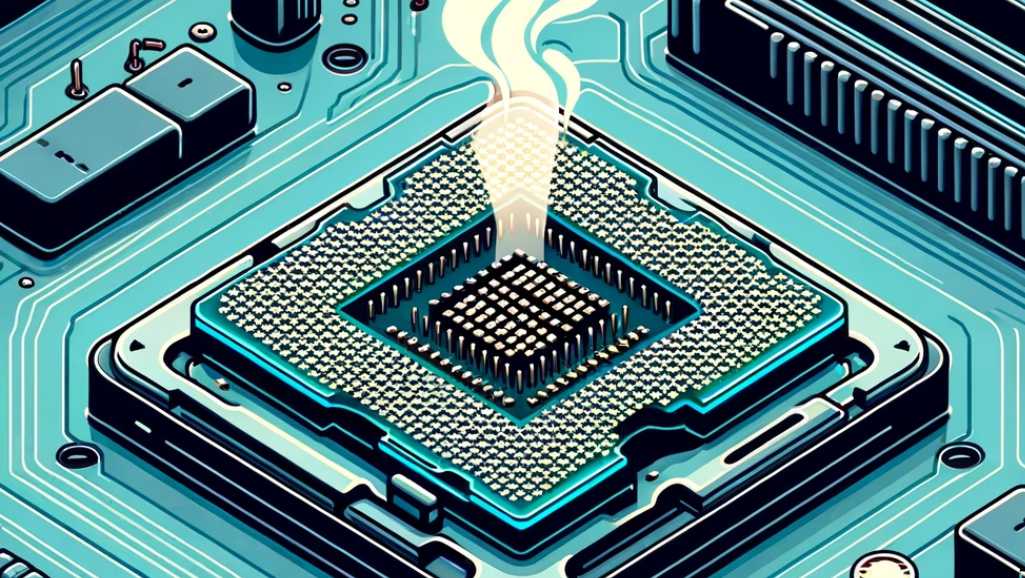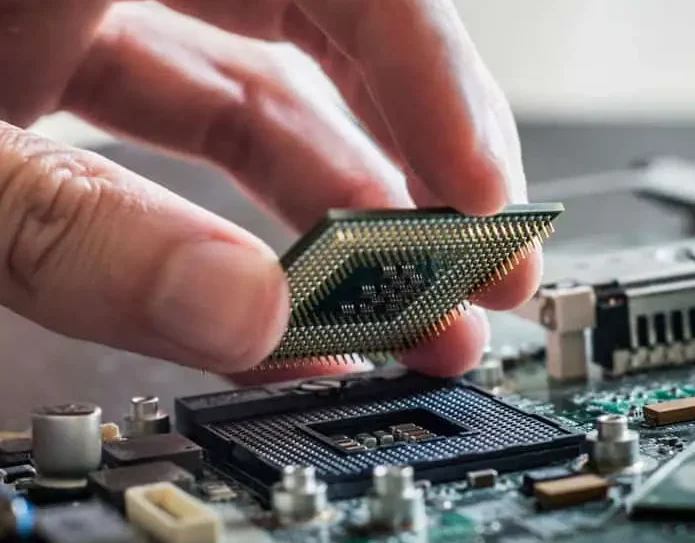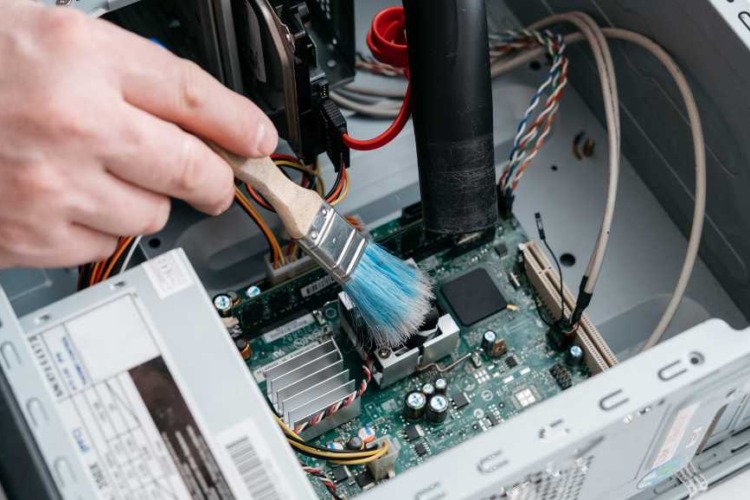

How To Know If CPU Is Broken
Hey there, tech enthusiasts! Are you worried that your CPU might be on the fritz? Well, you’ve come to the right place. In this comprehensive guide, we’ll delve into everything you need to know about identifying a broken CPU. We’ll cover the importance of the CPU, common symptoms, and other indicators that something might be amiss. Moreover, we’ll guide you through testing methods, why CPUs fail, and troubleshooting steps. And if all else fails, we’ll even tell you when to seek professional help and where to go, especially if you’re in Singapore. So, let’s get started!
This guide is your one-stop-shop for all things CPU-related. Whether you’re a seasoned tech expert or a newbie, we’ve got you covered. So, sit back, relax, and let’s dive into the fascinating world of CPUs!
1. Importance of CPU in a Computer
So, you’ve heard the term CPU countless times, right? But have you ever wondered why it’s so crucial in a computer system? Well, let’s dive into the fascinating world of CPUs and understand their significance.
What is a CPU?
First off, CPU stands for Central Processing Unit. Think of it as the brain of your computer. Just like your brain controls various functions of your body, the CPU manages all operations of the computer. It’s the central hub where all the magic happens.
The Brain Analogy
Here’s an easy way to understand it. Imagine the CPU as the brain of the computer. The brain doesn’t make all decisions in your body. Similarly, the CPU isn’t the only processing unit in a computer. However, it’s the most important one. It directs a large number of processes, making it indispensable.
What Does a CPU Do?
So, what tasks does a CPU handle? Well, it’s responsible for performing calculations and running programs. Moreover, it works in sync with other components like Random Access Memory (RAM). The RAM sends instructions to the CPU, which then processes these and delivers the output
Universality of CPUs
Here’s something interesting. CPUs aren’t just in your desktop or laptop. They’re in every electronic device that qualifies as a computer. This includes your smartphone, smart TV, and even your tablet.
How CPUs Have Evolved
CPUs have come a long way. They used to be large circuit boards filled with transistors. Now, they’re small enough to fit in your pocket. Their speed is measured in gigahertz (GHz), reflecting their ability to perform millions of calculations per second.
The CPU’s Role in Modern Life
Thanks to advanced CPUs, we’ve leapt from basic tasks to streaming Netflix and playing lifelike video games. They interpret binary signals, the basic language of computers, to perform increasingly complex tasks.

2. Most Common Symptoms of a Broken CPU
Alright, now that we’ve covered the importance of a CPU, let’s talk about the red flags. What are the signs that your CPU might be on its last legs? Knowing these symptoms can save you time, money, and a lot of headaches. So, let’s dive in.
Booting Issues
Firstly, if your computer doesn’t go through the normal booting process, that’s a big red flag. You might notice a blank screen and no beep codes during startup. Even if the fans are running and motherboard LEDs are on, the absence of a POST (Power-On Self Test) is a clear indicator that your CPU is in trouble.
Frequent Shutdowns
Next up, frequent shutdowns. If your CPU is overheating, the fans can’t dispel the heat effectively. This leads to your computer shutting down to prevent further damage. So, if your computer is turning off without warning, it’s time to investigate.
Beeping Noises
Moreover, beeping noises during startup are another sign. These beeps are part of the POST test. If the test encounters issues with the CPU, it will signal this through a series of beeps. Usually, 5-7 beeps indicate a CPU-related problem.
Physical Damages
Also, don’t ignore physical signs. If you see charred or burnt marks around the CPU socket, that’s bad news. These marks indicate that the CPU has been exposed to excessive heat and is likely damaged beyond repair.
Freezing
Additionally, random freezing is a symptom you can’t overlook. If your computer becomes unresponsive, especially right after you log in, it’s a sign of CPU failure.
Blue Screen of Death (BSOD)
Lastly, the infamous Blue Screen of Death (BSOD). If you see a BSOD with the code “0x00000,” it’s likely a CPU issue. This is a severe symptom and requires immediate attention.
3. Other Indicators
So, you’ve learned about the most common symptoms of a broken CPU. But wait, there’s more! Sometimes, the signs are subtle and not as straightforward. In this section, we’ll explore other indicators that can hint at a failing CPU.
Absence of POST (Power-On Self Test)
Firstly, let’s talk about POST. It’s a diagnostic test that runs each time you turn on your computer. If your system fails to pass this test, the motherboard’s BIOS sends out 5-7 coded beeps. This usually indicates a CPU issue. So, if you’re not hearing any beeps during startup, it’s a sign worth investigating.
Operating System Not Loading
Next, consider the operating system. If your computer turns on but fails to load the OS, it could be a CPU problem. You might see fans running at high speeds, yet the operating system doesn’t kick in. This is another red flag that your CPU might be failing.
Motherboard and CPU Cooler Observations
Additionally, pay attention to your motherboard and CPU cooler. If the motherboard LEDs are on but the system fails to boot, it’s a sign. Also, if the CPU cooler isn’t spinning or is making strange noises, it could indicate a CPU issue.
Intermittent Down-Throttling
Moreover, watch out for intermittent down-throttling. If your CPU occasionally slows down despite having a robust cooling solution, it could be a sign of a bad CPU. This might happen if the heat spreader is misaligned or damaged.
External Physical Damage
Lastly, don’t overlook external physical damage. Burn spots, bent pins, or even excessive thermal paste can cause CPU issues. These signs usually indicate overheating or improper installation.
4. How to Test if CPU is Broken or Bad
So, you’ve noticed some red flags and you’re worried your CPU might be failing. What’s the next step? Testing, of course! In this section, we’ll guide you through various methods to test if your CPU is bad. Let’s get started.
Visual Hardware Check
Firstly, you can perform a visual hardware check. To do this, you’ll need to remove the CPU from your computer. Once removed, inspect for any bent pins on the side that goes into the motherboard. If you find a bent pin, it’s likely causing issues. However, be cautious while bending it back; it can break off, forcing you to replace the CPU.
Software Solutions for CPU Testing
Next, let’s talk about software solutions. Several programs can help you diagnose CPU issues. If you own an Intel processor, the Intel Processor Diagnostic Tool is your best bet. It’s free and effective at testing processors. Other options include PC-Doctor and Ultra-X, which are also reliable for diagnosing CPU and motherboard issues.
Error Codes and Their Meanings
Moreover, pay attention to error codes. If you encounter a Blue Screen of Death (BSOD) with the code “0x00000,” it’s likely a CPU issue. These codes can provide valuable insights into what’s wrong with your CPU.
Motherboard Observations
Additionally, look at your motherboard. If the LEDs are on but the system fails to boot, it could be a CPU issue. This is another sign that your CPU might be bad.
Check for Physical Damages
Lastly, don’t forget to check for physical damages. Burn spots, bent pins, or excessive thermal paste can all indicate CPU issues. These usually point to overheating or improper installation.
5. Why Do CPUs Fail?
So, you’re well-versed in the symptoms and testing methods for a bad CPU. But have you ever wondered why CPUs fail in the first place? Understanding the reasons can help you take preventive measures. Let’s delve into the common causes of CPU failure.
Age and Lifespan
Firstly, age plays a significant role. Every machine has its limits, and CPUs are no exception. A computer that’s five years old or more is in its grace years. Over time, the CPU can just give up.
Heat and Overheating
Next, let’s talk about heat. Overheating is a leading cause of CPU failure. Excessive heat can alter the minute impurities in the silicon, which form transistors. This change in operating parameters can lead to CPU failure.
Stress or Overclocking
Moreover, stress or overclocking can also cause CPUs to fail. Pushing the CPU beyond its limits can lead to overheating and eventual failure. So, if you’re into overclocking, make sure you know what you’re doing.
Electrical Power Surges
Additionally, electrical power surges can be detrimental. A sudden spike in voltage can fry the CPU instantly. Therefore, it’s advisable to use surge protectors to safeguard your computer
Transistor Failures
Lastly, the failure of even a single transistor can make a CPU stop functioning. Modern CPUs contain millions of transistors. A failure in one can cause the CPU to die suddenly.
6. Troubleshooting Steps
Alright, you’ve got a good grasp on the symptoms, testing methods, and reasons why CPUs fail. Now, what if you suspect your CPU is acting up? Don’t worry; we’ve got you covered. In this section, we’ll walk you through some troubleshooting steps to help you figure out what’s going on.
Monitor CPU Temperature
Firstly, keep an eye on your CPU temperature. Use free software like Speccy or CPU-Z to check the temperature. If it’s too high, you might be dealing with overheating. Make sure to check the temperature when the system is idle and under heavy load.
Check for Dust and Debris
Next, dust can be a major culprit. Blocked air vents can increase the CPU temperature significantly. So, open up your computer case and check for dust or debris. Clean it out to ensure proper airflow.
Reapply Thermal Paste
Moreover, improper application of thermal paste can cause issues. If you’re comfortable doing so, remove the heatsink, clean it, and reapply thermal paste. Remember, a small dab is enough; don’t overdo it.
Test with a Different Power Supply
Additionally, a faulty power supply can cause CPU issues. Try connecting your CPU to a different power supply. If the problem persists, the issue likely lies with the CPU.
Reset Overclocking Settings
Lastly, if you’ve overclocked your CPU, revert to the default settings. Overclocking can cause overheating and instability. Resetting the settings can often resolve these issues.
7. Preventive Measures
You’ve learned how to identify, test, and troubleshoot a bad CPU. Now, let’s focus on prevention. After all, an ounce of prevention is worth a pound of cure, right? In this section, we’ll discuss some preventive measures to keep your CPU in tip-top shape.
Keep Your CPU Clean
Firstly, cleanliness is key. Dust and debris can block airflow, leading to overheating. Make sure to clean your CPU and its surroundings regularly. Use compressed air to blow out any dust from the CPU fan and heatsink.
Proper Cooling System
Next, invest in a good cooling system. Overheating is a major cause of CPU failure. A proper cooling system can help maintain optimal temperature levels. This includes not just a good fan but also thermal paste and, for those who want to go the extra mile, liquid cooling.
BIOS Updates
Moreover, keep your BIOS updated. Manufacturers often release updates that fix bugs and improve performance. These updates can sometimes include improvements that help your CPU run more efficiently.
Use Genuine Software
Additionally, always use genuine software. Pirated or cracked software can be riddled with malware that puts unnecessary stress on your CPU. Stick to verified sources for all your software needs.
Be Cautious on Unsecured Networks
Lastly, be cautious when connected to unsecured networks. Malware and viruses can enter your system and cause CPU stress. Always ensure you’re connected to a secure network and keep your antivirus software updated.
8. When to Seek Professional Help
You’ve done your best to identify, test, and even prevent CPU issues. But what if the problems persist? Sometimes, it’s best to call in the experts. In this section, we’ll discuss when you should seek professional help for CPU issues.
Persistent Overheating
Firstly, if your CPU continues to overheat despite your best efforts, it’s time to consult a professional. Overheating can lead to severe damage, not just to the CPU but also to other components. A technician can identify the root cause and offer a solution.
Frequent System Crashes
Next, frequent system crashes are a red flag. If you’ve tried troubleshooting and the problem persists, professional help is advised. Technicians can run specialized diagnostic tests to pinpoint the issue.
Unresolved Error Messages
Moreover, if you’re still getting error messages like the Blue Screen of Death, it’s time to seek expert help. These errors often indicate deeper issues that require specialized knowledge to resolve.
Failed Diagnostic Tests
Additionally, if your CPU fails multiple diagnostic tests, don’t hesitate to consult a professional. Failed tests are a clear sign that something is seriously wrong. A technician can provide a more in-depth analysis.
Inability to Boot
Lastly, if your system fails to boot entirely, it’s a serious issue. This is often a sign of a severely damaged CPU or other critical components. In such cases, professional intervention is essential.
9. FAQs on Broken CPU
Can you fix a broken CPU?
Technically, repairing a broken CPU is extremely challenging and often not feasible for the average user. If you’re dealing with bent pins, you might be able to carefully straighten them, but this is risky. For issues like internal circuitry damage or overheating, professional repair is usually not cost-effective compared to replacing the CPU.
How can a CPU get damaged?
CPUs can get damaged in various ways, including:
- Overheating: Lack of proper cooling can cause the CPU to overheat, leading to potential damage.
- Electrical Surges: Sudden spikes in power can harm the CPU.
- Physical Damage: Mishandling, like dropping or applying too much pressure, can physically damage the CPU.
- Malware: Although rare, some malware can put excessive load on the CPU, causing it to fail over time.
Will your PC turn on if your CPU is broken?
In most cases, your PC will not successfully boot if the CPU is damaged. You might hear beep codes or see LED flashes on the motherboard, which are indicators of hardware failure. Some PCs might attempt to start but will shut down shortly after. Source
Can overheating damage the CPU?
Yes, overheating can significantly damage the CPU. Prolonged exposure to high temperatures can cause the CPU to throttle its performance, and in extreme cases, it can even lead to permanent damage. It’s crucial to have an effective cooling system to prevent this.
Feel free to refer back to these FAQs as you navigate through CPU issues. They offer quick answers to some of the most common questions you might have.
10. Where to Fix a Broken CPU in Singapore
You’ve tried all the troubleshooting steps, but your CPU still isn’t cooperating. Now, you’re wondering where to get it fixed, especially if you’re in Singapore. Don’t fret; we’ve got a suggestion for you: Volta PC Upgrade & Repair. Let’s explore why this is a great option and what other choices you have.
Why Choose Volta PC Upgrade & Repair?
Firstly, Volta PC Upgrade & Repair is known for its expertise in handling CPU issues. They offer a range of services, from simple diagnostics to complex repairs. Their team of professionals is well-equipped to tackle any CPU problem you might have.
Address:
Tai Seng Branch: 8 Burn Road #01-04, Trivex, Singapore 369977
Jurong Branch: Blk 132 #01-279C, Jurong Gateway Road, Singapore 6001324
- Contact:
Whatsapp us | Call 69500453 | Telegram us


